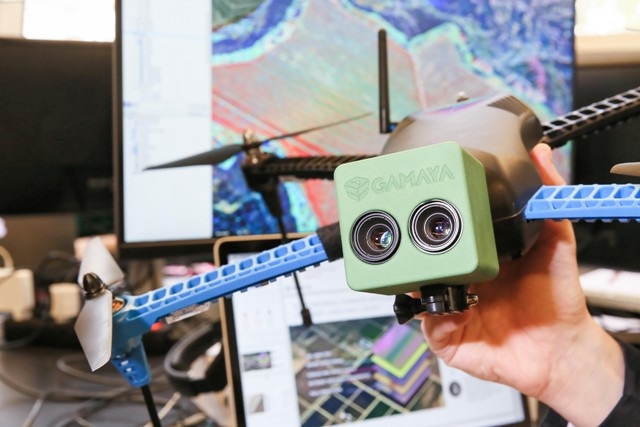May 24 2016
EPFL spin-off Gamaya has just raised 3.2 million francs for its agricultural drone system. The system combines a miniature hyperspectral camera and artificial intelligence to give farmers very precise information on the health of their crops. It can also be used to ensure fertilizer, pesticides and other treatments are used sparingly.
 © Alain Herzog 2016
© Alain Herzog 2016
Gamaya, an EPFL spin-off, has developed an automatic, aerial system for monitoring crops using a hyperspectral camera affixed to a drone. The system detects a wide range of information, including seed type, stage of growth, hydration level, parasites and diseases. The aerial views can also be used to cut costs by ensuring that herbicides, pesticides and fertilizers are only applied to areas that need them.
The company has just raised 3.2 million francs from investors including the Sandoz Foundation, Peter Brabeck-Letmathe, Seed4Equity and the Swiss venture capital firm IV Partners. In addition, last Thursday it was awarded the W.A. de Vigier award worth 100,000 francs.
Sensing the spectral signature of plants
Hyperspectral cameras expand the spectrum of colors that can be detected by recording light wavelengths from visible to infrared. They are therefore effective in picking up the “spectral signature” of plants, which varies with their stage of growth and the surrounding conditions. A lack of water or nutrients, for example, modifies the physiological state of plants and affects how they reflect light. So a healthy plant will have a different spectral signature from that of a plant experiencing stress. Wide range of variations have been documented and put into databases.
Gamaya developed a software program that maps the nuances of the spectrum detected by the drone onto colors visible to the human eye. Each problem has a color, which means farmers can analyze their crops in detail on their computer screen. The system also provides advice – such as how much fertilizer to use – and yield projections.
Well-suited for the vast croplands in South America
The system, which simply requires farmers to operate a drone, is now ready for use with soy, corn and sugar cane fields. “We are starting out by targeting Latin America, where the market is estimated to be worth five billion dollars,” said Yosef Akhtman, the company’s CEO. The farms there are vast, which means that conditions are frequently uneven. The system has already been successfully tested by farmers in Brazil.
Gamaya says its system can help farmers boost their harvest, bring down costs and reduce disease-related risks. “It could boost profits by up to 30% by helping farmers quickly and accurately resolve problems,” said Akhtman. The company, which was founded last year, has been selected by Forbes and Business Insider as one of the twelve most promising young companies in agriculture-related technologies. “This system’s ability to enhance efficiency in crop treatment could also help address the main challenge awaiting agriculture: we will have to produce as much food between now and 2050 as we did over the past 10,000 years combined.” The global population is expected to reach some 10 billion people by mid-century.